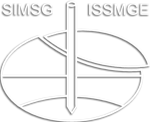The description of underground works evolution in Hospital Santo António station (Porto Metro)
The description of underground works evolution in Hospital Santo António station (Porto Metro)
Currently, the particular context of each underground work leads to the choice of different constructive methodologies in view of the wide variety of existing options and in this sense the article will focus on the description of underground works evolution, in an urban environment, on Porto Metro, specifically the Hospital Santo António station. Hospital Santo António station is part of the future circular line, section Liberdade / S. Bento - Boavista / Casa da Música, and its location is conditioned by: proximity to a road tunnel (Túnel de Ceuta); by an underground water line (Rio Frio); the need to preserve tree species in the existing garden (Jardim do Carregal) and to minimize disturbances to adjacent buildings and traffic during construction. These constraints led to a unique geometric solution and constructive methodology, consisting basically of two large-section tunnels (approximately 200 m2), which intersect obliquely, two large-diameter shafts with an approximate area of 400 m2 (for access, ventilation and emergency exit) and two inclined tunnels to arrive at distribution floor for access to the dock platform. The methodology adopted in the tunnels is the NATM "New Austrian Tunneling Method", while in the large diameter shafts the vertical sequential excavation method was chosen. These methodologies are an excavation procedure with minimal support, which depends on the geomechanical and hydrogeological properties of the terrain, because it considers that the tunnel surrounding terrain contributes to its own support.
A. Pereira; T. Azeredo; A. Carvalheira; I. Coelho
18th European Conference on Soil Mechanics and Geotechnical Engineering (ECSMGE2024)
D - Current and new construction methods
